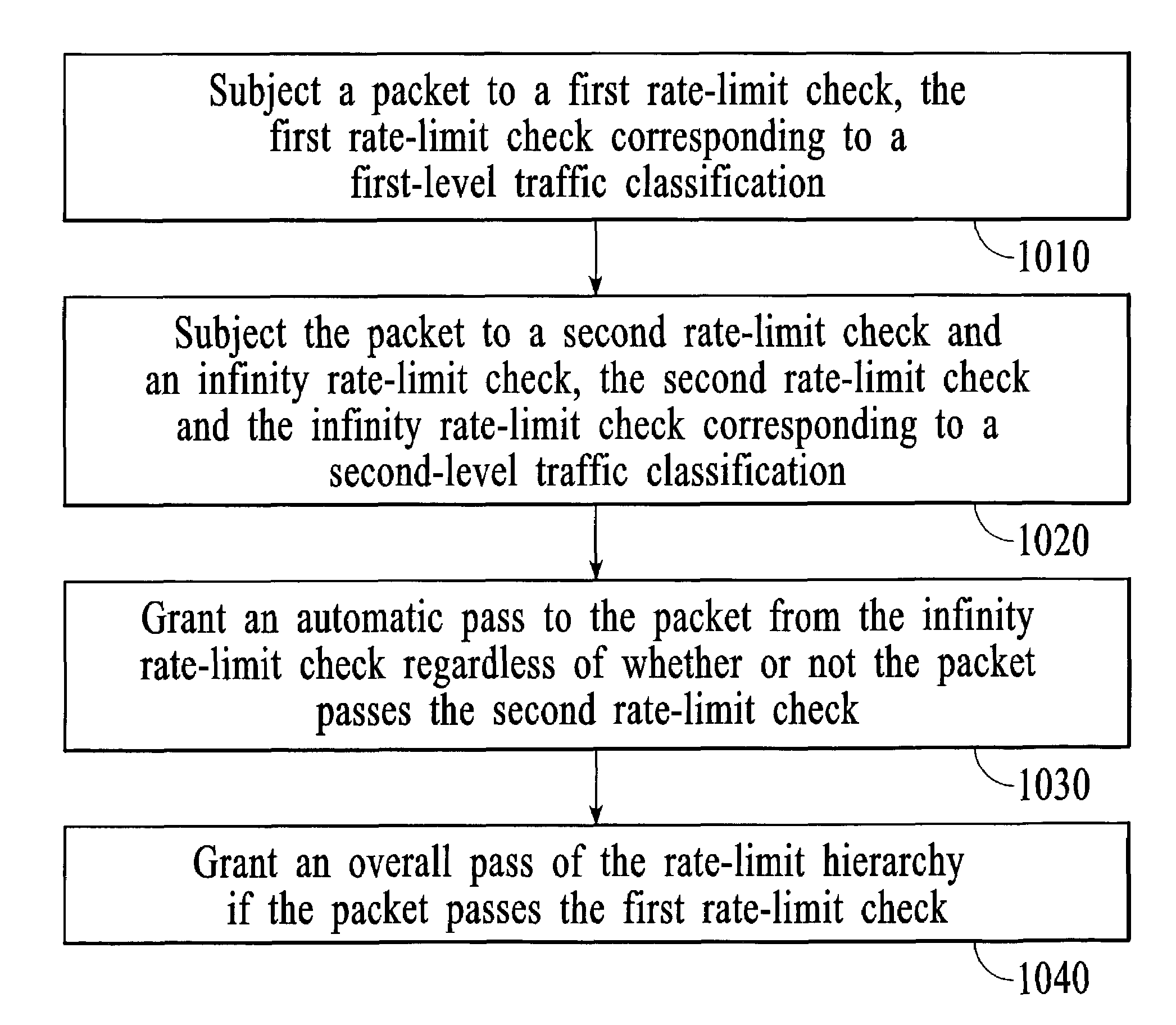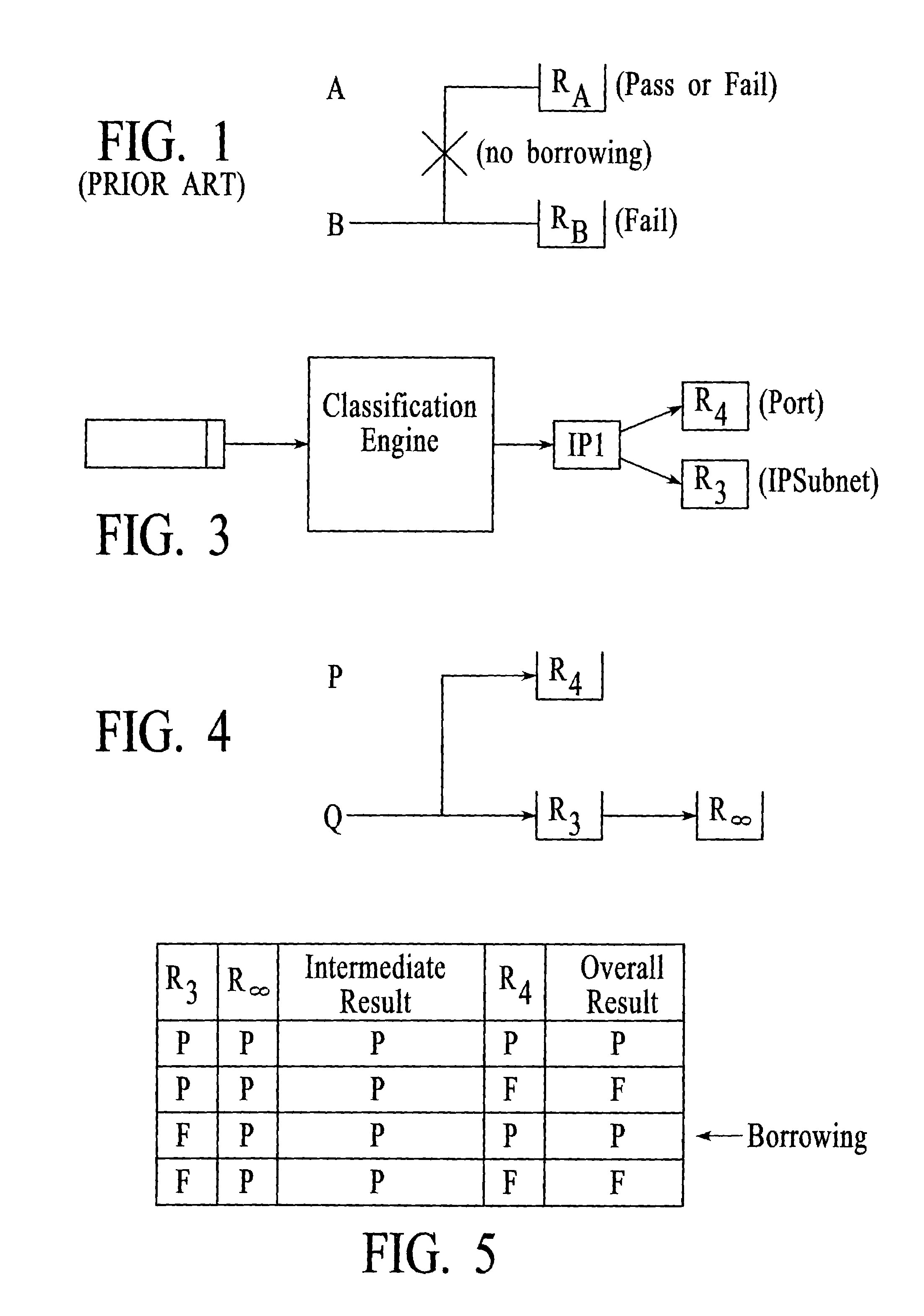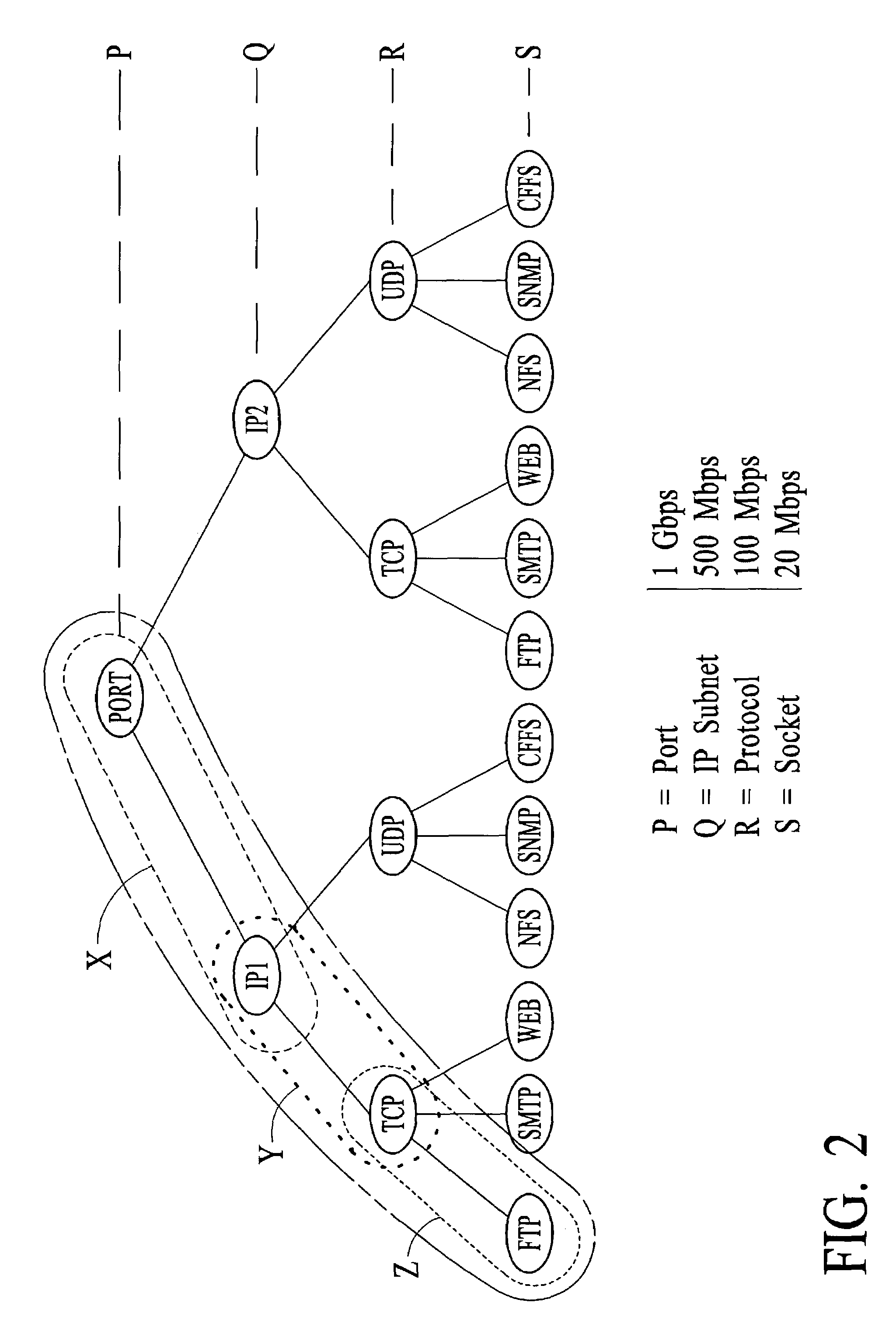Hierarchal rate-limiting at a network node that utilizes an infinity rate-limit check
- Summary
- Abstract
- Description
- Claims
- Application Information
AI Technical Summary
Benefits of technology
Problems solved by technology
Method used
Image
Examples
Embodiment Construction
[0024]FIG. 2 is an example of a traffic classification hierarchy suitable to be used for hierarchal rate-limiting, according to an embodiment of the invention. In the example depicted in FIG. 2, there are four traffic classification levels; P, Q, R, and S. The “P” level is the highest (i.e. most broad) level in the traffic classification hierarchy and corresponds to the port level, i.e., the physical port level. The “Q” level is the second highest level (i.e., narrower than the highest level) in the traffic classification hierarchy and corresponds to the Internet Protocol (IP) subnet level. The “R” level is the third highest level (i.e., narrower than the second highest level) in the traffic classification hierarchy and corresponds to the protocol level. The “S” level is the fourth highest level (i.e., narrower than the third highest level) in the traffic classification hierarchy and corresponds to the socket level. The traffic classification hierarchy described with reference to FI...
PUM
 Login to View More
Login to View More Abstract
Description
Claims
Application Information
 Login to View More
Login to View More - R&D
- Intellectual Property
- Life Sciences
- Materials
- Tech Scout
- Unparalleled Data Quality
- Higher Quality Content
- 60% Fewer Hallucinations
Browse by: Latest US Patents, China's latest patents, Technical Efficacy Thesaurus, Application Domain, Technology Topic, Popular Technical Reports.
© 2025 PatSnap. All rights reserved.Legal|Privacy policy|Modern Slavery Act Transparency Statement|Sitemap|About US| Contact US: help@patsnap.com



